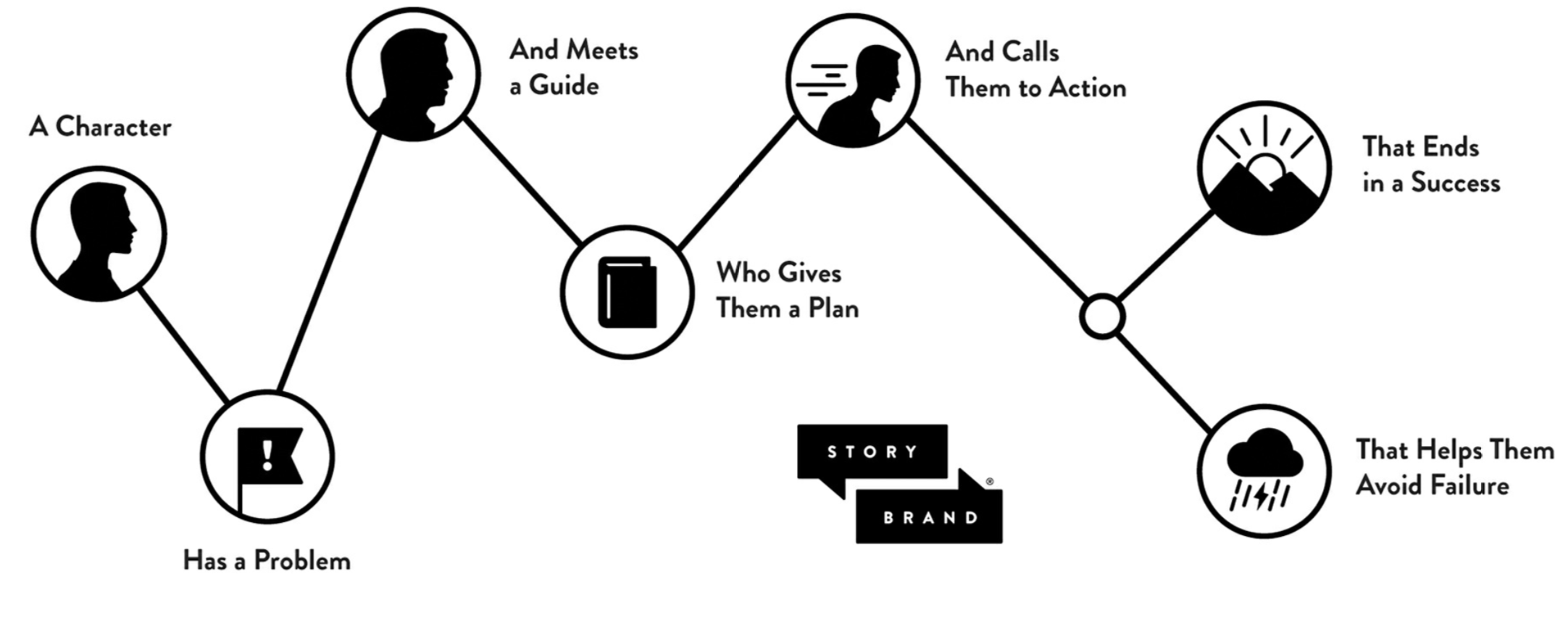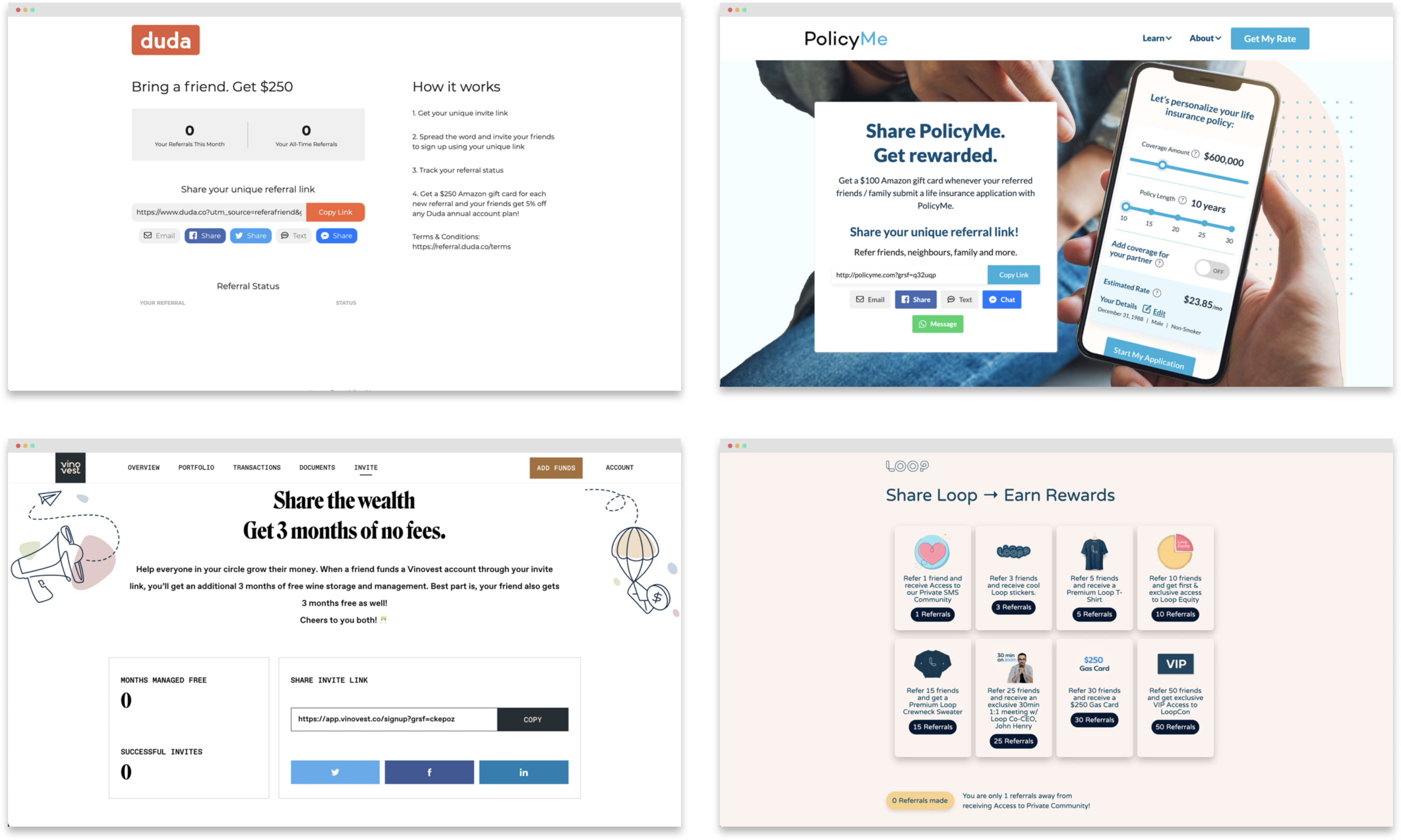We've all heard the story of the Hobbit named Bilbo, who went on an adventure through dangerous lands swarming with orcs, goblins, and dragons. Or the story of Mary Poppins, a magical nanny who employs music and adventure to help two neglected children become closer to their family.
But what is a brand story?
A brand story is an important part of marketing that will help you define what your company stands for by connecting who you are with what you do. Here are some tips on developing a brand story that will resonate with your target audience.
What Is a Brand Story?
A brand story is a written narrative that describes the origins of your company and its products/services in an emotionally engaging way. A brand story can be created for any type of company, including financial services and FinTech companies. It's a powerful tool for building an emotional connection with your audience and differentiating your brand. As the HubSpot article states, "If you can craft a compelling brand story, your audience will remember who you are, develop empathy for you, and, ultimately, care about you."
Established brands most commonly use brand storytelling to differentiate themselves from their competitors and build deeper emotional connections with customers. When executed correctly, a brand story can increase customer loyalty, brand awareness, and drive business growth. As Semrush notes, "Customers who share your values are more likely to be loyal to your brand. A study in the Harvard Business Review found emotional connections are significant drivers of brand loyalty."
A successful brand has two components: one is the tangible product or service, while the other is intangible—the feelings and emotional connections it inspires in customers. The best way to build these emotional bonds is by telling an authentic, compelling brand story that resonates with your audience's values. As HubSpot states, "Spitting out a highlight reel, which many brands do, doesn't actually resonate with people. Instead, it's important to tell the truth. What people relate to and get inspired by isn't endless success — it's the rocky journey of finding an idea, getting knocked down, and finding a path to success." In order to craft an effective brand story, you need to develop an authentic voice, be transparent about your company's challenges and values, and clearly communicate the benefits of your products or services.
Developing a strong, authentic brand narrative that connects with your audience's values is a sure-fire way to build word of mouth and drive business growth. Semrush states, "Brand storytelling explains your values and engages with potential customers who share them. Psychologist Jerome Bruner found people are 22 times more likely to remember details when stories communicate messages rather than just facts and numbers."
Why Do Marketers Use Brand Stories?
Brand stories are about making your brand recognizable in an increasingly competitive market through the special (and emotionally engaging) experiences it offers its audience. Brand storytelling is a recent trend that is being enthusiastically picked up by marketers worldwide. It is not about writing a narrative around how the company exists to make money by providing people with the stuff they need. It is about capturing people's attention and establishing personal bonds with your target audience.

How to Write a Brand Story
Here's how to tell a story so that it sears your brand into people’s memories, following the StoryBrand 7 Framework.
Step 1: A Character
The main character in your brand story is not your company or your company's CEO. It's your clients and your prospects. The story should be all about them. They are the heroes, and you want them to be seen as heroes. Your goal should be to make them feel connected to your story immediately. As Semrush states, "Empathy is a key element of powerful brand storytelling - make sure your audience can see themselves in your brand story." To define your character, you first need to define your customers through detailed buyer persona research to better understand who you are doing business with and what challenges they face.
Step 2: Has a Problem
Imagine what type of story The Lord of the Rings would have been without Sauron, the sorcerer of dreadful power, master of shadows and of phantoms. Or Robin Hood without The Sheriff of Nottingham.
Every compelling story needs a conflict or challenge that the main character must overcome. As the HubSpot guide states, "At their core, stories are about overcoming adversity. A lack of conflict means there's no drama or emotional journey for people to relate to." In order to offer a solution through your brand, you first have to intimately understand the problems and challenges your customers face.
Step 3: And Meets a Guide
The next step is to connect your customers (the heroes) with a guide - your brand or company. You're not the hero in this story, but the wise, trusted guide that steers them on the path that will help them overcome their challenges and achieve success. As Semrush notes, "The guide provides the hero with a plan. The plan is the bridge the hero must cross to arrive at the climactic scene." You're what Gandalf is to Frodo, Obi-Wan Kenobi to Luke Skywalker, and Ser Jorah Mormont to Khaleesi. Storytellers use the guide character to encourage the hero, equip them with the tools and plan they need, and help them ultimately win the day.
Step 4: Who Gives Them a Plan
Customers trust a guide who gives them a clear, actionable plan to follow. This is the guide's main goal in the story. If we look at classic stories and movies, the guide provides the hero with a plan - the roadmap they need to follow to overcome obstacles and achieve success. The plan is the bridge the hero must cross to arrive at the climactic scene. Juliet has to drink the potion the apothecary gives her to be free to be with Romeo. Rocky has to train using nontraditional methods to defeat his opponent.
In the business world, these plans can take many shapes and forms tailored to your industry. But at their core, all effective brand story plans do one of two things: they either clarify the specific steps someone can take to become a customer and do business with you, or they remove any sense of risk, uncertainty or friction that customers might have if they're considering purchasing your products or services. As Semrush states, "Without a guide to guide them, your customers might end up feeling confused and wondering whether your product or service will work for them. That confusion will be an excuse not to do business with you."
For example, the plan can look something like this:
- Schedule an appointment.
- Allow us to create a customized plan.
- Let’s execute the plan together.
Step 5: And Calls Them to Action
Even after providing a clear plan, customers often won't take action unless they receive a direct, compelling call-to-action. It might be obvious to businesses what they want customers to do next, like place an order or subscribe, but it isn't always obvious to the customer. As the HubSpot guide states, "Customers can't read your mind and they don't know what you want them to do even if it seems obvious. You have to clearly invite customers to take a journey with you or they won't."
Effective calls-to-action can take many forms beyond just "buy now" buttons, such as:
- Prominent text CTAs guiding users to take the next step
- Animated CTAs that grab attention on pages
- Exit-intent popups or banners for abandoning visitors
- Embedded CTAs within long-form content
The key is to make it crystal clear what the desired action is and why the user should take it, removing any ambiguity. Find places in your story that you can place your CTAs to push your audience into becoming customers.
Step 6: That Helps Them Avoid Failure
Compelling stories maintain tension by keeping the audience in suspense until the very end - will the hero succeed or fail? This suspense is created by making the stakes crystal clear. As the HubSpot guide advises, "You, as the storyteller, have to let the customer know all the awful things that might happen to them if they don't buy your product/service."
Just as movie heroes are motivated by either avoiding something negative or achieving something positive, your customer characters should be driven by those same core motivations. Make the consequences of not using your solution clear and painful to avoid.
If Frodo didn't destroy the ring, the world would have been covered in a second darkness. If your customers don't buy your software, they will end up spending thousands of dollars on a third-grade software that doesn't work and requires pricey add-ons.
Step 7: And Ends in Success
While making the stakes of failure clear is important, you also need to paint a vivid picture of the positive outcome and transformation your customers will experience by using your solution. The most successful brands make it crystal clear what their lives will look like after they buy your products, or they will have no motivation to do so. That end vision has to be included everywhere, on your website, within your emails, and everywhere else.
Don't just assume customers will understand how your brand can improve their lives - tell them explicitly. Spell out the future benefits like financial security, more free time, less stress, or whatever positive transformation your product delivers. Give them a compelling vision of what their world will look like after going through the journey you've outlined.
Here are a few other tips:
- Use Imagery: To help your customers connect with your story better, you need to bring it to life visually. Adding images, graphics, videos and other multimedia can help communicate your narrative more vividly and make it more memorable.
- Stay Consistent: Consistency is key - stick to the core values, themes and messaging you've established in your brand story across all channels. Your audience should know what to expect from you while still looking forward to what's next.
- Refine: Don't be afraid to iterate and refine your brand story as your company evolves. Great stories are living narratives that get richer over time. Just look at how George R.R. Martin has expanded the Game of Thrones universe.
- Activate Your Story: Share your brand story with customers across all channels and make it highly visible - your website, social media, email campaigns, and more. Integrate it into all your marketing efforts.
Build your customer referral program without the dev time
Sign up for a free trial of GrowSurf to lower your customer acquisition costs, increase customer loyalty, and save gobs of time.

Brand Story Framework and Formulas
Here's something that may surprise you:
The most successful brands with high brand equity don't just wing it when it comes to storytelling - they follow proven narrative frameworks and formulas. As HubSpot states, "All the best companies with high brand equity like Apple and Google use tested-and-proven storytelling formulas. In fact, these formulas can be applied to anything, from your social media posts to copy on your website."
Having a consistent framework provides structure to your brand storytelling and makes it more compelling and memorable. Let's explore five of the most effective formulas:
Let's explore the five best formulas!
Three-Act Structure
One of the most classic storytelling frameworks is the three-act structure, which has been used since the 18th century. It's a way to write stories and novels based on how people experience and remember events. It usually consists of three parts or acts:
- Act One: Set up the scene, introduce the characters.
- Act Two: Present a conflict and build up tension.
- Act Three: Resolve the issue.
This simple but powerful structure can be applied to brand storytelling as well, helping create a compelling narrative arc for your customers.
Five-Act Structure
Another popular storytelling framework is Freytag's Pyramid, the five-act narrative structure developed in the 19th century. It was created by Gustav Freytag in the 19th century. Freytag's theory is that every narrative can be divided into five parts: exposition, rising action, climax, falling action, and conclusion.
- Exposition: Introduce the protagonist (your customer) and what they want to achieve.
- Rising Action: A conflict or challenge arises that prevents the protagonist from achieving their goal, forcing them to take action.
- Climax: The turning point where the protagonist employs your solution and appears to resolve the conflict.
- Falling Action: The protagonist experiences the outcomes of using your product/service, whether successful or not.
- Conclusion: The final resolution, where the protagonist either achieves their goal or continues struggling.
This five-act structure provides a more detailed narrative arc to map your brand storytelling to, allowing you to more vividly depict the journey your customer goes through.
Before – After – Bridge
The Before-After-Bridge formula is one of the most commonly used frameworks for brand storytelling, as it clearly contrasts the prospect's current struggles with the positive outcomes your solution provides.
It involves three parts:
- Before: Set the stage by vividly depicting the problem, frustration or challenge your target customer is facing currently.
- After: Paint a picture of how their world would look after using your product - free of those problems and full of positive benefits.
- Bridge: This is where you present your product or service as the solution that bridges the gap between their current reality and desired future state.
This simple three-part framework can be applied to everything from social media posts and blog content to sales emails and landing pages, making it a versatile model for brand storytelling.
Problem – Agitate – Solve
The Problem-Agitate-Solve framework is similar to Before-After-Bridge, but takes the emotional tension up a notch.
The structure is the following:
- Problem: Clearly identify a painful problem or frustrating obstacle your target customer is facing.
- Agitate: Amplify the severity of that problem using vivid, emotive language that agitates the pain and frustration.
- Solve: Finally, present your product or service as the solution that eliminates that problem once and for all.
This formula helps build drama and tension in your brand storytelling by leaning into the emotional motivations of your audience before providing the relief of your solution. When used effectively, it can be a powerful framework for capturing attention and driving action.
Simon Sinek’s Golden Circle
One of the most well-known brand storytelling frameworks is Simon Sinek's Golden Circle, which he outlines in his famous TED talk "How Great Leaders Inspire Action." In his talk, he explains how some of the most influential companies use this storytelling formula.
In short, the story contains three parts, including:
- Why: Start with the purpose - explain why your company exists and what core beliefs it was founded on.
- How: Describe how you plan to fulfill that purpose and bring your beliefs to life through your actions.
- What: Finally, explain what you actually produce or sell to serve your why - your products or services.
Sinek argues that the most inspiring companies and leaders communicate from the inside out, starting with their sense of purpose rather than just describing their offerings. This taps into the deeper emotional drivers of their audience and builds a stronger connection.
Brand Storytelling Examples
Here are some examples of brands that are using the storytelling approach to better connect with their customers:

Spotify
One cool thing Spotify does is take its customers' data and use it to really understand who its audience is and connect with it. They have created several campaigns based on the behaviors of their audience to create a connection with their customers. Every year, they do a wrap-up of the year that was in music, and the year it was in the behaviors of their users. Not only that, but they also put a comical spin on their stories to engage the audience.
For instance, their 'Wrapped' campaign was created to help users remember their decade of music. Every user received a detailed report of their top songs from the last year featuring most played, favorite genres, and other stats.
Airbnb
Another company that does an outstanding job at brand storytelling is Airbnb. Although the company uses storytelling in many different ways, one of its most effective campaigns is allowing its community to share its own stories. Not only does this build engagement, but they also take these stories and promote them on their site and social media. In one of their newest campaigns, called Made Possible by Hosts , the company aims to educate people on the magical experiences that hosts bring to guests. They created a series of videos using real photographs from guests staying in the homes of hosts around the world.
Google is another company that's been creating memorable campaigns to connect with its users. One of the most notable storytelling campaigns is their Year in Search campaign that happens annually. In short, the company releases yearly videos that showcase the top searches of each given year, both joyful and tragic. They feature events that have touched everyone in some way in an attempt to evoke a strong range of emotions from viewers.
Conclusion
To sum up, here's a quick overview of what we learned in this post:
- A brand story is a written narrative that describes the origins of a company and its products, as well as the company's culture and values.
- A successful brand has two components: one is the tangible product or service, while the other is intangible—the feelings it inspires in customers.
- Brand stories are about making your brand recognizable in an increasingly competitive market through the special (and emotionally engaging) experiences it offers its audience.
- One of the best ways to write a story so that it sears your brand into people's memories is by following the StoryBrand 7 Framework.
- Some of the most commonly used brand story frameworks are the Three-Act, Five-Act, and the Before-After-Bridge structures.
- If you're looking for brand story inspiration, explore some of the most popular brand storytelling examples from companies like Airbnb, Spotify, and Google.
Now go out there and start telling your brand story!
Build your customer referral program without the dev time
Sign up for a free trial of GrowSurf to lower your customer acquisition costs, increase customer loyalty, and save gobs of time.

















